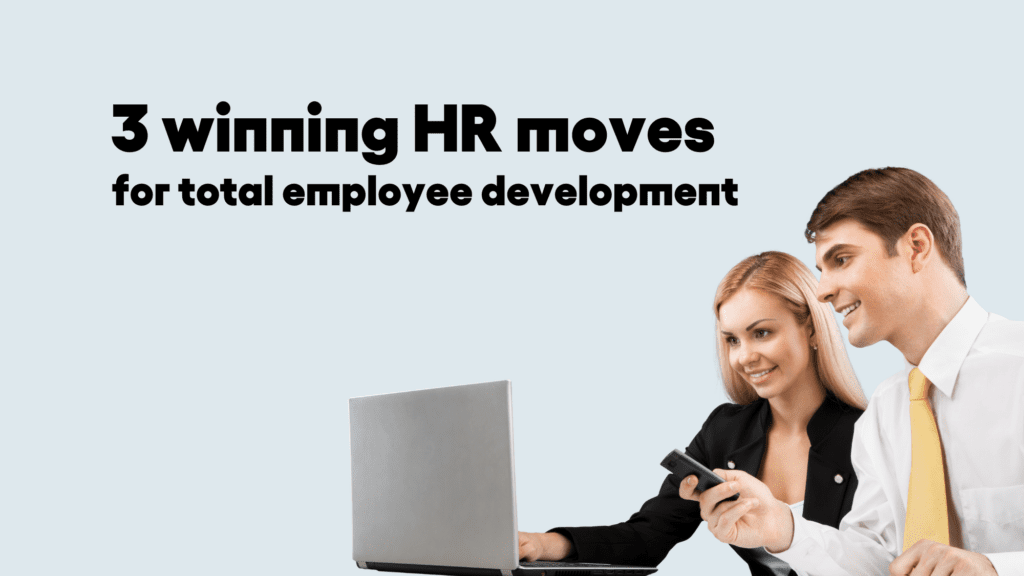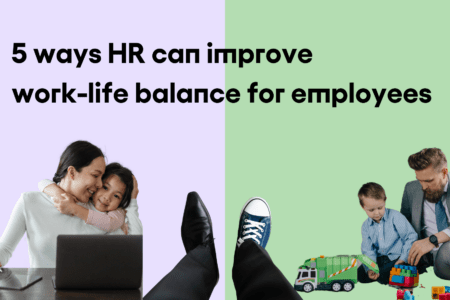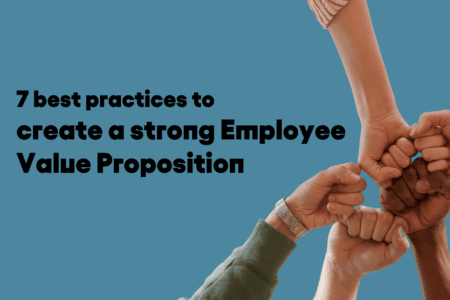Long-term solutions to beat turnover rates by accentuating employee strengths and increasing talent development.
These days, we’re in what has been dubbed as an “employee’s market”. We see employees going after what they want, ultimately raising the competition and forcing employers to step up their game.
As we know by now, employees tend to gravitate towards organizations that match their own values and demonstrate an employer brand that mirrors their general outlook on the world.
If you’ve won over your dream talent, congratulations! However, the work to keep them happy doesn’t just stop there, as they will be looking for constant opportunities to grow within your organization. Your team wants to be the best they can be in their roles, which is why employee strengths should always be honed and improved upon.
From career conversations with employees to educational trainings, the checklist for employee development strategies is endless.
Here are the most effective ones to help you get the ball rolling.
Set measurable goals and do it early on
Strategic talent development can’t begin if there are no goals to reach through the trek and out the other side. Therefore, it’s essential to be able to sit down and have that eye-opening career conversation with employees, especially one that pertains to the expectation they should meet. Otherwise, how are they supposed to exceed them?
Through clear communication, HR professionals and leaders should be able to properly articulate where exactly they want their employees to be, and even provide a timeline for them to enhance the vision. With that first tangible and substantial goal set in stone and agreed upon, an employee can shift their mindset to wherever it needs to be, and the desired performance and productivity will soon follow.
In your talent development planning for your employees, know that a measurable goal is one an employee will feel much more motivated to attain. Remember, elusive goals render vague results.
A measurable variable in a goal can be anything from a typical KPI of driving a specific amount of sales dollars, to the number of times a deliverable needs to be produced in a time period. This way, an employee can easily figure out for themselves what they need to work on for the week and what projects should be prioritized. By implementing specifics into your employee development strategies, HR leaders can fluidly promote productivity and efficiency throughout the workday.
Learn how to ask the right questions
Nowadays, there are so many over-the-top and in-depth tactics available, especially online, that overcomplicate the process of getting to know what your employees really want.
The relieving truth is this – almost none of these do anything that genuine employee-employer conversations couldn’t.
HR professionals and leaders should be able to approach their employees and talk to them about their work and career needs the same way employees should be able to talk to HR about, well, anything work or even personal life related.
Just as you are taught to listen actively, you should also be able to communicate by asking the right questions. If you’re on a mission to help an employee with their talent development, your questions should spark intrigue to activate creative thinking that generates innovation.
Being an inspiring force behind an employee can greatly benefit them and is one of the most pleasant parts of employee development strategies. Doing this successfully requires you to keep that line of communication open, and ensure the employee knows they are a valuable asset to the organization. It might not be easy, but it is the fundamental, simple solution.
Invest in learning opportunities
You’re a great leader, but like all great leaders, you will never have all the answers.
The world is continuously changing, and for organizations to thrive, this means getting with the times and making sure employees acquire the knowledge and skills they need to keep the company successful in the face of new challenges and innovations. This is why your talent development planning should prioritize employee learning and training.
A few good things about increasing employee strengths? You don’t have to do it entirely alone, and it doesn’t have to break your quarterly budget.
With today’s digital-first culture, there are so many reliable resources that could teach employees a wide range of skills. Online videos, tutorials, and podcasts are just a few of many free or extremely affordable forms of educational content that could make all the difference for your organization.
Investing in your team does come with risk, it wouldn’t be honest to say it didn’t. What if you spend all that money, and they quit? …and to that we’d challenge: what if they stay?
Overall, investing in your employees and helping them with their talent development is so much more than just allowing them to add a shiny new proficiency on their resume.
When time and money is put into them, employees will feel it. What follows is the realization that they are an asset to the organization. Investing in your employees’ talent development solidifies and supports their desire for personal growth. And why go anywhere else if it’s already happening, right here?
Other important and delicate factors like salary, benefits, and company culture are enormous deciding factors for whether or not an employee would like to continue their career within your organization. However, investing in your employees by providing them with the resources they need to thrive within their role is a great place to start when it comes to employee retention.



